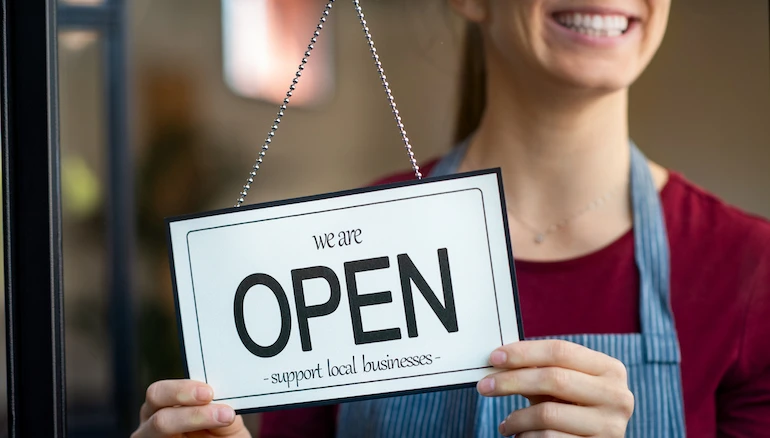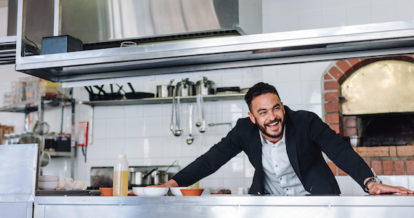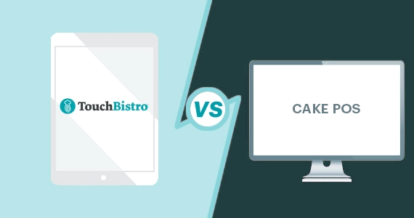All restaurants need to innovate to stay competitive. This doesn’t mean taking your family’s 50-year-old spaghetti recipe off the menu, especially if it’s a customer favorite. Rather, it means being open to growing and evolving so that your restaurant can thrive for years to come. And one of the best ways to make sure your business doesn’t stagnate in today’s rapidly-changing world is to set restaurant goals for the short- and- long-term.
However, goal-setting doesn’t come naturally to every restaurateur. You may not be sure of the right next step to take in your business, or how to make your vision for the future a reality. That’s why we’re here to help you out with the process. In this article, we’ll cover:
- Why it’s important to set goals for a restaurant
- The difference between goals and objectives of a restaurant
- Examples of short- and- long-term restaurant goals
Ready, set, goal!
Why is it Important to Set Goals for a Restaurant?
Chances are you’ve set a goal before in your personal life, if not for your restaurant. Setting a goal is simply deciding that you want to accomplish something, like learning how to play the guitar or speak another language. But this is only the first step. You’ll need to take action to reach your goal, which we’ll dig into next.
As a restaurateur, it’s critical to set both short- and- long-term goals for your business. Short-term goals help your restaurant run more efficiently and profitably today, so that you’ll have a long-term future to work toward. In contrast, long-term goals are those big dreams that may take years to realize, but will be worth the effort in the end.
Goals vs Objectives
Let’s revisit the example of learning how to play the guitar. If that’s your goal, you need to set a few objectives to help you achieve it – otherwise, your chances of becoming the next Jimi Hendrix are going to be slim. Objectives are the individual actions you must take to reach the final destination of your goal.
In this instance, your objectives might include buying a guitar, signing up for in-person or online lessons, and practicing at home. It’s crucial to identify and execute these small steps because each objective you complete allows you to make progress toward your goal. You can see the path to success laid out in front of you and you’ll have an opportunity to celebrate the little wins along the way, which will help you stay motivated.
Without breaking your goal down into objectives, you risk getting overwhelmed or simply not knowing which action to take next, which could stop you in your tracks. Or, you could derail your progress another way. For example, if you don’t consider how often you’ll need to practice guitar at home, you may forget to schedule time to do so and your skills could slip.

5 Examples of Short-Term Restaurant Goals
With this process in mind, now let’s talk about setting goals for a restaurant. The short-term goals and objectives of a restaurant typically focus on making the business run better or generating a quick injection of cash into your bank account. Here are a few examples of short-term restaurant goals, along with several restaurant objectives to support each of these goals.
1. Increase Daily Net Restaurant Sales
The first step to boosting daily sales is to understand how to do it, so one of your objectives might be to research how to increase restaurant sales. You may then decide to focus on specific tactics, like upselling with modifiers and add-ons. Of course, this means you’ll also need to ensure your front-of-house staff are properly trained in upselling techniques. You can likely already see how small objectives play a crucial role in helping you achieve your larger goal.
Another great way to increase daily sales is to run in-house promotions. So, perhaps you set an objective to have a team brainstorming session where you’ll come up with creative and enticing ideas for specials. Or, you could pull up one of your point-of-sale (POS) reports to identify which days of the week your sales could use the biggest boost. For example, if you run a brewery and your POS sales data shows that Tuesdays are slow, you could try hosting a Tuesday trivia night to increase sales on that specific day of the week.
2. Improve Margins on Best-Selling Menu Items
There’s nothing wrong with setting restaurant goals based on easy or quick wins. Leveraging your best-selling menu items is a smart move, and you can target a plethora of objectives to reach your goal of improving their margins. For instance, you could raise prices on those items or swap expensive ingredients for less costly substitutes.
Don’t forget that one of your initial objectives should be to identify your best-selling menu items. If you don’t already know which items are fan favorites, the easiest way to find out is by running a POS sales report.
3. Maximize Your Table Turnover Rate
Your table turnover rate is an important metric, because the more tables you can serve in a given time period, the more sales you can make. If you know your restaurant could use some improvement in this area, there are a few actions you can take today that will make a measurable impact.
Training servers to take orders by seat will eliminate confusion at the table and speed up service, resulting in faster table turnover. Reducing visits to the table, and instead getting more done in one visit (like making introductions and taking drink orders) will also increase efficiency. And, seating parties only when all guests have arrived at the restaurant will enable you to turn tables over more quickly.
4. Hire a New Employee
There are many reasons why you might need to make a hire in the short term; you could be filling a position that was vacated unexpectedly, or you may want to staff up ahead of a busy time of year, like summer or the holidays.
A few restaurant objectives to help you accomplish this goal could include writing a job description, identifying the best job boards to post it on, creating the post then sharing it on social media, and asking your team to share the post within their networks.
5. Grow Your Email List
Email marketing is one of the most important goals and objectives of a restaurant – the marketing you do today drives the sales you’ll make tomorrow. However, your customers have a lot of dining options. If you can get their attention by showing up in their inboxes, you’ll be at the head of the pack.
Even if marketing isn’t your strong suit, there are a few simple ways to grow your email list in the short term. For example, post about it on social media and let your audience know that when they sign up, they’ll receive a coupon for 20% off their next meal. Or, ask your front-of-house staff to mention it to guests. You can even create a contest and enter everyone who joins your email list during a certain time period into a draw for a $100 gift card.

5 Examples of Long-Term Restaurant Goals
It’s time to look to the future. Let’s walk through five long-term restaurant goal examples and supporting objectives to get you excited about realizing your long-term vision.
1. Increase Monthly Net Restaurant Sales
How’s this for efficiency? Many of the short-term goals we identified earlier can actually help you achieve long-term goals such as boosting your daily sales, improving your margins on best-selling menu items, maximizing your table turnover rate, and growing your email list. All of these actions add up to greater monthly sales.
Another way to generate more monthly sales is by establishing a customer loyalty program. Rewards programs are known to drive revenue, but you likely won’t be able to set one up overnight, which makes it an ideal objective for this long-term goal. You can start by researching software vendors that can do a lot of the legwork for you to get the program up and running.
2. Add New Revenue Streams
Having multiple revenue streams like gift card sales, online ordering, takeout and delivery, or branded merchandise is an excellent idea for businesses across industries. To decide which new stream to pursue for your restaurant, start with research to gain an understanding of key factors like demand, competition, and overhead costs.
Say you’ve decided that adding takeout and delivery is the ideal new revenue stream for your restaurant. You’ll need to create a takeout and delivery menu, buy takeout packaging, and hire drivers or sign up for a third-party app. Or, you choose to sell branded merchandise as a new revenue stream. To achieve this goal, you’ll need to figure out what kind of merch you want to sell (mugs, hats, sweatshirts, etc.) and team up with a graphic designer to help you create it. Then, you’ll need to figure out production, shipping, and pricing.
3. Lower Your Staff Turnover Rate
If hiring employees is your short-term focus, keeping those team members should be your long-term goal. Decreasing your restaurant turnover rate is important for several reasons – most notably to keep costs down, maintain a positive work environment, and continue delivering high-quality customer service.
So, what restaurant objectives can support you in achieving this goal? First, review your hiring strategy to make sure you’re hiring for the right fit from the very start. Promoting employees internally and fine-tuning your onboarding process for external hires are also great ways to reduce turnover. To measure success, consider setting restaurant benchmarks and restaurant KPIs. For example, you can set a standard for your employee turnover rate and then evaluate improvements against it overtime.
4. Open a New Location
Perhaps opening another location has always been on your bucket list. While you can’t snap your fingers and make it appear, but you can set objectives that will help you reach your goal someday.
First, make sure it’s financially feasible for you to expand your business or figure out when it will be, whether that’s in one year or five years. Then, consider where it makes sense to open another restaurant. Once you’ve done your research, it’s time to find the right space to rent and engage with local permitting authorities if needed. There are many more steps, but tackling them one at a time is the best way to stay focused on the task at hand and keep one foot moving in front of the other.
5. Give Back to Your Community
Even in your early days as a restaurateur, you may dream about being in a position where you’ve accomplished most of the goals you’ve set, and you’re ready to give back to your community. (Spoiler alert: this will be much more likely if you set both goals and objectives, and work toward them slowly but surely!)
Establishing partnerships with other local organizations like food banks and shelters can be a rewarding way to make an impact, but it’s important to take your time to set these initiatives up properly. It’s never too early to start thinking about how your restaurant can become a pillar of your community. You can begin by considering your values as a person, your restaurant’s values as a brand, and what you have to offer your community to make it a better place.
Setting goals allows your restaurant to progress and build a bright future. You now have 10 restaurant goal examples to draw from as you chart your course to the next phase of your business and your life.
Download our free inventory template
Sign up for our free weekly TouchBistro Newsletter







